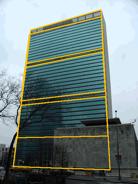Golden Ratio Disputes
For a long time debates have been going on about whether certain objects exhibit the golden ratio or not. The correct answer to this question lies in how one approaches the problem.
The Parthenon is often shown with a golden rectangle framing it to illustrate its golden ratio proportions. Unfortunately, a precise golden rectangle would need to start at the second of four steps approaching the Parthenon, rather than the base of its columns. It’s close to a golden rectangle, but not close enough to conclude that it was used in its design. However, when this golden rectangle is placed as just described, the bottom of the supporting beam at the top of the columns is at the golden ratio of its height. Furthermore, the 14 rectangles across the horizontal beam each appears to be divided exactly at their golden ratio point (Sahu, Charan & Kumar, n.d.). Hence, the Parthenon both does and does not follow the golden proportion based on perception.
Dr. George Markowsky, a PhD in Mathematics from Harvard University claimed that the UN headquarters does not follow the divine proportion based the ratio of the building’s height to width. On the contrary, an award-winning Disney education film illustrated that the golden ratio relationship, in the UN Headquarter. It is based on three horizontal golden rectangles stacked vertically, and not its measured height to width ratio. Once again, we can see that the perspective of analysis leads to the debate on whether certain objects are based on the divine proportion.
These disputes are also based on topics such as the human body structure, the human face, the Great Pyramids of Giza, the creations of Leonardo Da Vinci and many more.


